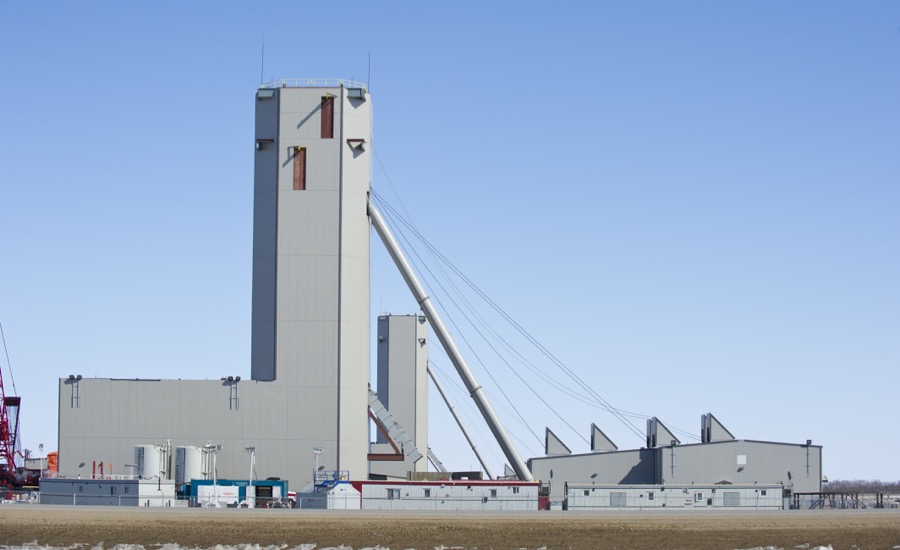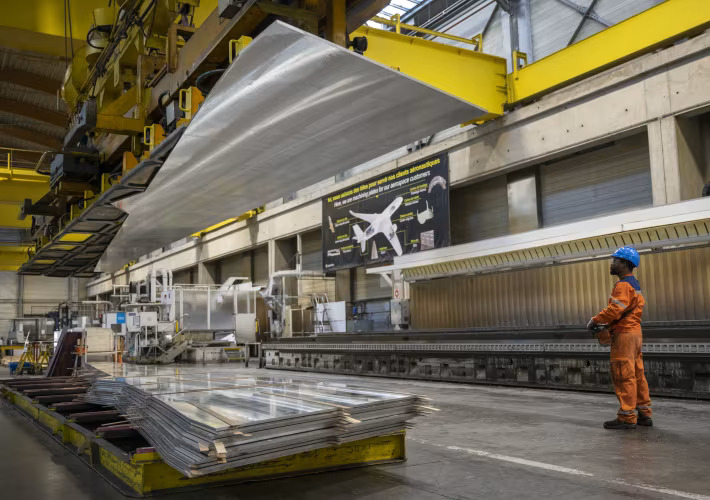BHP to grow potash business to size of iron ore — report

BHP (ASX, NYSE:BHP) (LON:BLT), the world’s largest mining company by market capitalization, is considering to grow its potash business to the size of its iron ore division, but only under “certain circumstances.”
Speaking to Japanese newspaper The Nikkei, chief executive Andrew Mackenzie said that as part of the company’s recently announced restructuring, BHP expects to reinvest what it gets for its US shale gas assets into potash.
BHP is currently developing its Jansen potash mine in Canada, which would be the company’s biggest single investment ever.
The results of this strategy, however, won’t be immediate, he warned: “It’s taken us 50 years to create today’s iron ore business. It will be another 50 years to create a potash equivalent. So you have to start somewhere,” Mackenzie said.
And that starting place seems to be Canada’s Saskatchewan province, where the world’s third largest iron miner is currently building its massive Jansen potash mine.
To date, BHP has committed a total investment of $3.8 billion to move Jansen into production. From that total, $2.6 billion have been set aside for surface construction and the sinking of shafts, though analysts predict the total cost will be close to $14 billion.
Mackenzie said last month it was looking at a phased expansion of Jansen, which is projected to produce 8 million tonnes of potash a year or nearly 15% of the world’s total.
He added the company could seek approval from the board for such expansion as early as June 2018, with production beginning in 2023.
Prices for the crop fertilizer ingredient, however, are not favourable — they are still hovering around $230 a tonne, less than half what they were only five years ago.
Besides, BHP’s iron ore business brings in about $9 billion a year, which doesn’t look like an easy target to match by any other division, particularly by potash, given current prices.
But the company is looking long-term and has repeatedly stated it believes rising demand for fertilizer in growing nations, particularly China and India, will lead to a long-term price increase for the commodity.
{{ commodity.name }}
{{ post.title }}
{{ post.date }}




7 Comments
Mark
Good lord. Potash prices aren’t even high enough (and may never be high enough) to make the Jansen mine, or K+S’s new Legacy/Bethune mine economic. Yet BHP is so bone-headed that they want to dump billions into some hole in the ground in Saskatchewan, Canada simply to stroke their egos.
PotashCorp’s market valuation is currently $13.5B. BHP could, with $10B, acquire 1/3rd to 1/2th of the company with relative ease, and gain access to a lot more production and diversification than ever possible with their single mega-mine at Jansen. And not collapse the price of the commodity even further in the process.
Chan
BHP has tried twice in the past to acquire Potashcorp; http://www.cbc.ca/news/business/bhp-s-bid-for-potashcorp-how-it-unfolded-1.929246 & http://business.financialpost.com/news/mining/potash-corp-rallies-amid-speculation-of-possible-takeover-it-feels-like-the-time-things-would-be-consolidating
Also BHP is a hard rock, heavy metal miner. They are trying to diversify into potash and Oil & Gas and it has been nothing but bad news for the company and shareholders. Andrew and BHP need to put their ego aside and start concentrating on optimizing the projects that are ongoing.
Brian
Beyond the negative economics there is the risk factor. It would be better to take that $14B to a casino rather than risk it all on a single mine, given the record of flooding in Canada’s potash mines. A decision to move ahead with such a risky venture would display an amazing ignorance of our mining history, and an example of how arrogance, ego and an attempt to create a legacy are the more important drivers.
Mark
Yup. Apparently PCS had even investigated that site in the past and rejected it on the basis of its geology. BHP could walk away from their glorified hole in the ground, spend their incremental $10B to acquire 1/3 to 1/2 of PotashCorp, and get a de-risked and rather significantly diversified investment in the sector which would produce more net to BHP’s balance sheet on day 1 than the Jansen project may ever produce.
Allan
The reason that Potash Corp. merged with Agrium was to foil the possible take over by BHP. They are looking 5 to 10 years down the road and are expecting the price of Potash to firm . Potash Corp Rocanville Division is the lowest cost per ton producer in the world at about $50.00 bucks a ton so $230.00 a ton leaves them with lots of black ink. If BHP can produce as efficiently as that it makes sense to build a mine now taking advantage of the lower construction costs and hoping Potash goes to $300.00 by the time they are in production. These fellows didn’t get this big buy not thinking things through.
SnakePlissken
Potash is used for? 95% for fertilizer. With the population of you lunatic humans STILL exploding at a rate that requires (3) new countries the size of the USA every decade, the market for potash is going to continue to grow. PREPARE. Or, find your brains, depopulate yourselves, and get back to good old sustainable living.
So, which one will you bet on? Humans remaining the maniacal, self-destructing imbeciles of the universe, or humans evolving a little and developing some better brains?
RDC1378
BHP has always been big on vision and quick to change goal posts for it’s executives and project managers. History shows they are no strangers to making enormous mistakes -hot briquette iron -US$4B, Zimbabwe Platinum US$4B, Titanium Sand US$4B all in a two year span in the mid ’90’s. I am sure there have been other fiascos since then. Their only goal is to get bigger, not necessarily better. So let’s just watch developments, Saskatchewan is happy to host and collect the fees and taxes accompanying the construction process. Engineering and construction companies will make their money and BHP will ultimately blame the predicted write down on whoever is holding the Operations seat when it all goes pop.